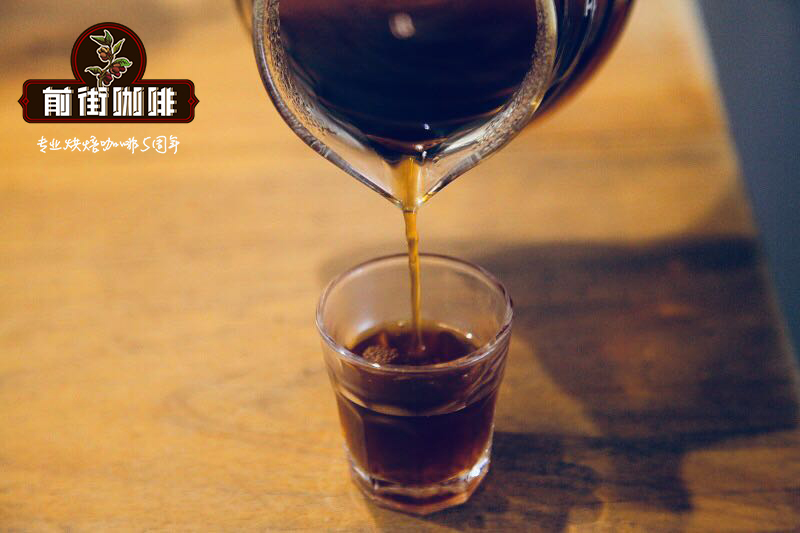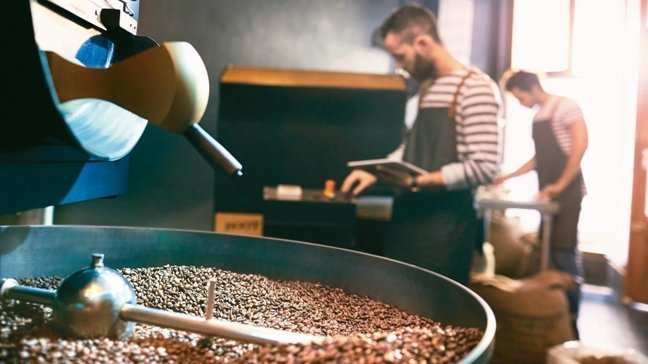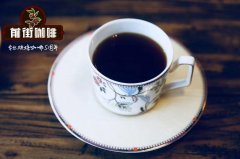An introduction to Taiwan's coffee culture? The development of coffee in Taiwan?

Professional coffee knowledge exchange more coffee bean information please follow the coffee workshop (Wechat official account cafe_style)
Taiwan's early coffee culture, one of the topics on cross-strait coffee culture, was deeply influenced by Japan. At that time, cafes played an important role in the literary, painting and art circles. Nowadays, cheap fresh freshly ground coffee has become a part of Taiwan's popular culture, and boutique coffee and hand-made coffee have become a new fashion.
The TV series "Purple Rice Court" depicts Taiwan in the 1930s, in which many intellectuals often talk about current affairs in Japanese-style Western-style cafes, exchange the latest news in the political, painting, and literary circles, and hold exhibitions in cafes.
There were only a handful of cafes in Taiwan in the 1930 and 1940s, but several well-known cafes, such as Polly Road, Shanshui Pavilion, and Tianma teahouse, were indeed an important stage in the painting, literary and theatrical circles at that time.
From the 1950s to the 1960s, the Star Cafe was famous for its literati cafes. At that time, people like Bai Xianyong and Wang Wenxing, who founded "Modern Literature", often gathered here; Huang Chunming and Chen Yingzhen often haunted the Star Cafe; and the late poet Zhou Mengdee sold books on the first floor of the star.
Cafes in these years show the characteristics of many public fields, and they have also become a good place for many media journalists to collect information or conduct exclusive interviews. Some people describe it as just as Camus's existentialism was brewing in the cafes on the left bank of Paris, the Taiwanese cafes in the above-mentioned era surged with a lot of ideological revolutionary trends.
In the 1960s and 1970s, professional European-style cafes began to appear in Taiwan, such as Shangdao Coffee, Old Tree Coffee and Bee Coffee.
The Old Tree Cafe is decorated with classic Louis XVI-style wooden tables and chairs, wooden ornaments, elegant chandeliers, and boasts siphon brewing coffee. When these European-style cafes first sprang up, they became a fashionable choice for middle-class dates and parties.
Along the way from literati cafes and professional cafes, Taiwan's coffee culture, after decades of development, has transformed from a minority elite culture to a common culture of the general public, and has many unique global characteristics.
How did all this happen?
Starbucks' arrival in Taiwan and convenience stores began to offer fresh, freshly ground coffee at low prices, all of which are behind the scenes.
Lin Che-hao, director of the Taiwan Coffee Research Office project, said, "since the 1980s, there has been a coffee renaissance in Taiwan. First of all, Starbucks promotes coffee, injecting a sense of fashion and fashion into coffee. Second, convenience stores offer fresh, freshly ground, affordable coffee, which is rare in many countries. "
Taiwan has the highest density convenience store in the world, and the ubiquitous convenience stores offer freshly ground coffee 24 hours a day.
"freshly ground coffee from convenience stores virtually sets a minimum target for Taiwan's coffee industry, that is, the quality of coffee in special cafes must exceed this standard, otherwise it will not be competitive. Lin Zhe-hao analyzed and said.
Once coffee became fashionable and became cheap and delicious, many Taiwanese office workers drank a cup of coffee almost every day.
The imagination of a romantic life of "want to make a good cup of coffee for others" has also begun to ferment in the hearts of many people, and the dream of many young people is to open their own coffee shop. A unique, original, personalized small cafes began to emerge in the streets of the metropolitan area.
Lin Zhe-hao points out, "there are at least 3000 cafes in Taiwan with small coffee roasters that can only bake 1 kilogram of coffee beans at a time, compared with 15 kilograms of coffee beans baked by their own roasters in the United States. Taiwan coffee has the characteristics of small scale, diversity and the pursuit of fresh grinding. "
As a result, many Taiwanese have formed the habit of going to a cafe for a cup of coffee, reading a book, and spending the whole afternoon.
Many coffee fans are further moving towards boutique coffee consumption. Boutique coffee attaches importance to the coffee beans from the beginning of planting, after harvesting, baking until the barista finished, each of the procedures must be properly handled by certain standards.
In small Taiwan, there have been many champions of baristas and cup testers all over the world, and many coffee farmers have begun to focus on producing boutique coffee, and some office workers are pursuing the delicacy of hand-brewed coffee. This is the best proof of the trend of boutique coffee.
Lin Zhe-hao said that Taiwan also has a unique global coffee culture. Many coffee-producing countries are mostly developing countries, and coffee is mostly used for export rather than domestic consumption. However, Taiwan is one of the few countries with both coffee production and consumption.
According to statistical estimates, each person in Taiwan will drink 100 cups of coffee per year in 2016, but this is still lower than the annual consumption of 380 cups per person in Japan and 300 cups per person in South Korea.
Important Notice :
前街咖啡 FrontStreet Coffee has moved to new addredd:
FrontStreet Coffee Address: 315,Donghua East Road,GuangZhou
Tel:020 38364473
- Prev

Map of World Coffee Culture | differences in roasting Coffee in the three Coffee Culture circles in Europe
Professional coffee knowledge exchange more coffee bean information please follow the coffee workshop (Wechat official account cafe_style) there are three major drinks, wine, tea, coffee, the historical background of the three is very different. Human drinking has a history of more than 12000 years, and there are records of making and drinking alcohol in Mesopotamia (two river basins) dating back to the Neolithic Age.
- Next

How to judge the extraction state of coffee by its taste? What is good coffee?
Professional coffee knowledge exchange more coffee bean information please pay attention to the coffee workshop (Wechat official account cafe_style) extraction may be the most important aspect of coffee brewing, but it is also one of the least understood by baristas. Extraction is everything. Without extraction, you can't even taste a cup of coffee. The simplest but not 100% accurate definition of coffee extraction: coffee extraction
Related
- How did the Salvadoran coffee industry develop in Central America?
- What exactly does the golden cup extraction of coffee mean?
- The Origin of Coffee flower
- [2023 Starbucks World Earth Day] there are more meaningful things besides free Starbucks coffee!
- What kind of coffee is there in Spain? 9 Flavors of Spanish Coffee
- Aromatic African coffee| Kenya's coffee culture and historical production area
- Liberica Coffee Bean knowledge: the characteristics of Liberian Coffee beans of the three original species of Coffee beans
- The origin and formula of Spanish latte introduces the taste characteristics of Bombon coffee in Valencia, Spain.
- How to adjust the solution of over-extracted coffee
- What is the tasting period of coffee beans? What is the period of coffee and beans? How should coffee wake up and raise beans?

